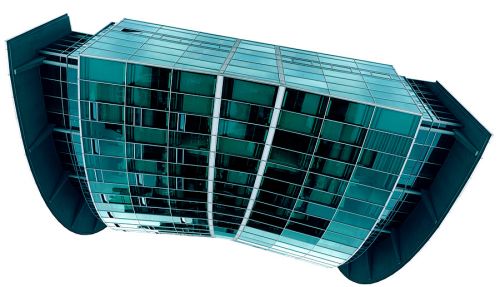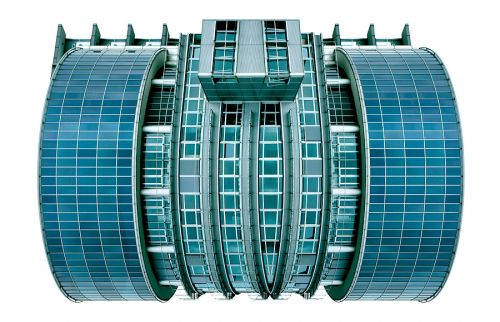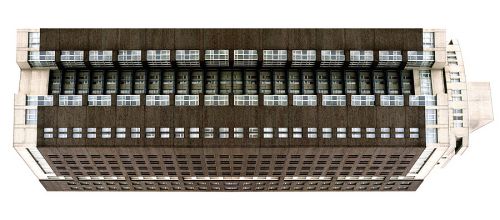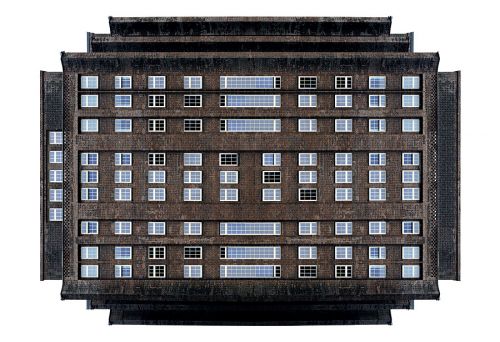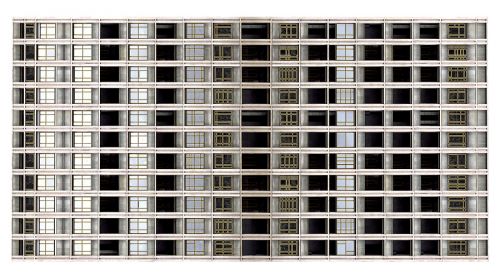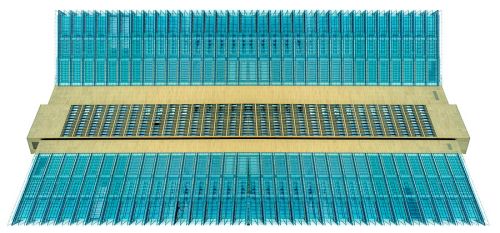Box
The series that shows this most clearly, perhaps, is called Boxes (see pp. 102-107). The artist uses architectural photographs here as raw material and reworks and reforms them into images of physical, abstract shapes. The manipulation of photographs and treating them as “sculptural material” is one of Peters’s preferred artistic strategies, and in Boxes it enables him to make the image autonomous to such an extent that it is impossible to translate it back into physical reality. The largest things that people can create - built architecture - the very epitome of the “well founded,” becomes, as a pictorial element, a building block in a plastic composition that is only possible in the image, and not in the sculpture itself. The so-called paragone, the competition between artistic genres, is an old motif in the history and theory of art. Here Peters presents a paragone between the plastic arts and the two-dimensional image, to the advantage of the latter, by defeating the plastic arts on their own turf: the invention and design of three-dimensional bodies. Only the flat image is capable of ignoring the physics of solid bodies in its presentation, is capable of seeming to do the impossible and even to allow it to float freely in imaginary space. There are no longer clues any how large these objects might be. And it is just as impossible for viewers to conceive where to place themselves amongst the objects of the image because the objects are free of any connection to other things that might function as spatial markers. These objects seem to have physicality only in a very limited, almost autistic way. A tendency among the collecting sciences, especially older ones, to reduce the objects of their interest to themselves, as it were, also plays a role in the Open Studies and this is rigorously demonstrated in its problematic.7 This idea enables the artist to use the visual technology of photography to take a quality that is attributed to photography - namely, that it plausibly documents reality - and to play it out against the reality of his photographs.

